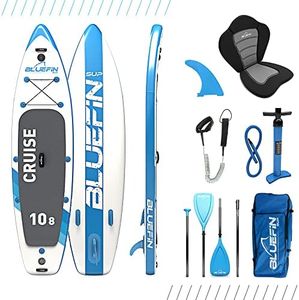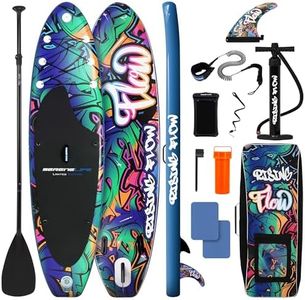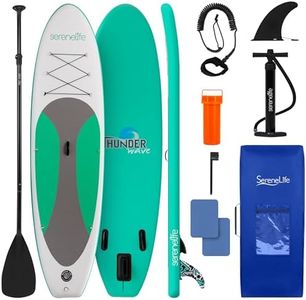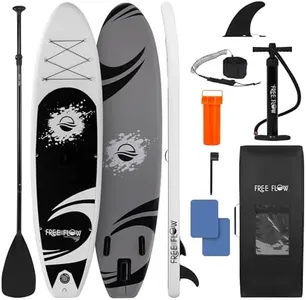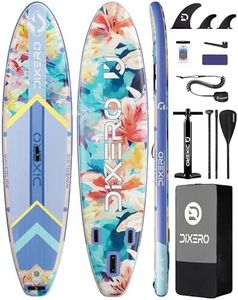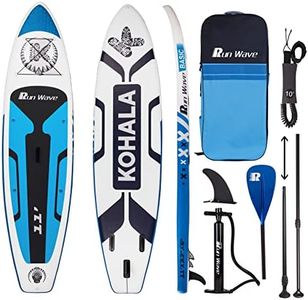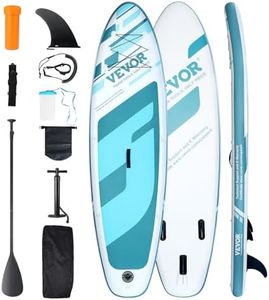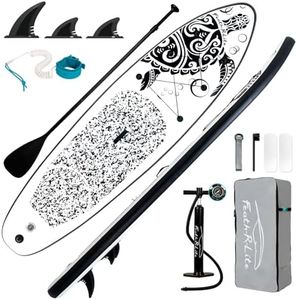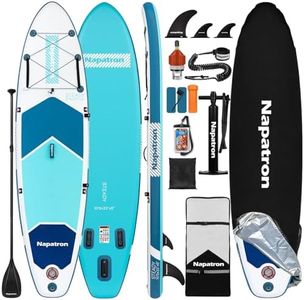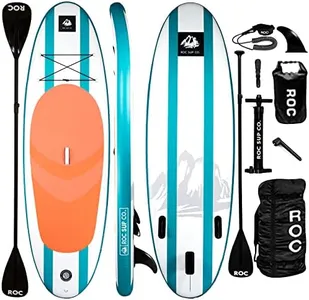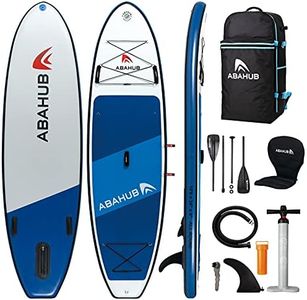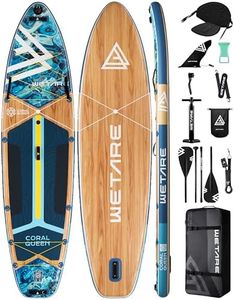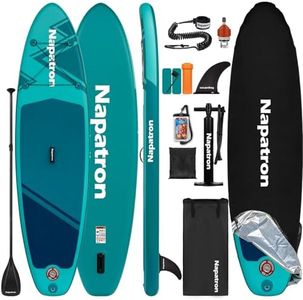We Use CookiesWe use cookies to enhance the security, performance,
functionality and for analytical and promotional activities. By continuing to browse this site you
are agreeing to our privacy policy
10 Best Paddleboards
From leading brands and best sellers available on the web.By clicking on a link to a third party's website, log data is shared with that third party.
Buying Guide for the Best Paddleboards
When choosing a paddleboard, it's important to think about where you'll be using it, what kind of activities you enjoy (such as relaxing, racing, or yoga), and your own skill level. Paddleboards come in a variety of shapes and sizes, each suited to different needs. Understanding key features can help you find the board that matches your plans, ensures stability on the water, and keeps you comfortable and safe during your adventures.Board TypePaddleboards come in several types, including all-around, touring, yoga, surf, and racing boards. All-around boards are versatile and great for beginners or casual use. Touring boards are designed for longer distances, offering better tracking on flat water. Yoga boards are wider and more stable, perfect for practicing poses on the water. Surf boards are smaller and more maneuverable for riding waves, while racing boards are longer and narrower for speed. Consider how you plan to use your paddleboard most often, as that should guide you to the best type for your activities.
LengthThe length of a paddleboard affects how it handles on the water. Shorter boards (under 10 feet) are easier to turn and great for surfing or smaller paddlers. Medium boards (10–12 feet) are ideal for all-around use and balance stability with maneuverability. Longer boards (12–14 feet or more) are designed for speed, better tracking, and covering long distances, making them suitable for touring or racing. Think about the type of paddling you'll do most—if you're a beginner or want a do-it-all board, a medium length is usually a safe bet.
WidthWidth is crucial for balancing on your paddleboard. Narrow boards (under 30 inches) go faster and are more agile, which suits racing or experienced paddlers. Medium boards (30–32 inches) are stable enough for most recreational users and good for all-around paddling. Wider boards (over 32 inches) provide extra stability, great for beginners, yoga, or larger paddlers. If you value balance and comfort, choose a wider board. If speed matters most, a narrower shape may suit you better.
ThicknessThickness affects how much weight the board can support and its rigidity in the water. Thinner boards (4 inches) sit lower and may feel less stable, but can be easier for smaller paddlers to handle. Medium thickness (5 inches) provides a balance between support and feeling close to the water. Thicker boards (6 inches or more) support more weight and are more rigid, good for heavier paddlers or those carrying gear. Match the thickness to your body weight and how much gear you'll carry; a thicker board is necessary if you need more floatation.
MaterialYou’ll find paddleboards made from solid (usually fiberglass or plastic) and inflatable designs (made from durable PVC). Solid boards offer more performance for speed and maneuvering but are heavier and require more storage space. Inflatable boards are lightweight, portable, and easy to store, making them ideal if you lack storage space or need to travel with your board. Choose the material based on how you’ll move and store your paddleboard, as well as the level of performance you want.
Weight CapacityWeight capacity tells you how much total weight (rider plus gear) the board can hold while staying stable and floating properly. If you are near or above a paddleboard’s maximum weight capacity, it may feel sluggish or unstable. Pick a board with a weight limit that comfortably fits your body weight plus any gear you plan to bring—always give yourself some extra margin for comfort and safety.
Fin SetupPaddleboards have different fin setups that affect stability and tracking. A single fin usually offers better speed and is commonly used for flat water. Three-fin (or 'thruster') setups provide more stability and control in surf, while smaller side fins can help with added tracking and agility. Consider where you’ll paddle most—a single fin for lakes and rivers, and a tri-fin setup if you want to surf or paddle in choppier water.
Deck PadThe deck pad is the area you stand on, which is usually covered in a textured, soft material for grip and comfort. A longer or wider deck pad is helpful if you move around, have extra passengers, or practice yoga. A good deck pad also prevents slipping and can make paddling barefoot comfortable. Look for a deck pad that suits your intended use, especially if you value grip or plan to spend time on the board doing more than just paddling.
